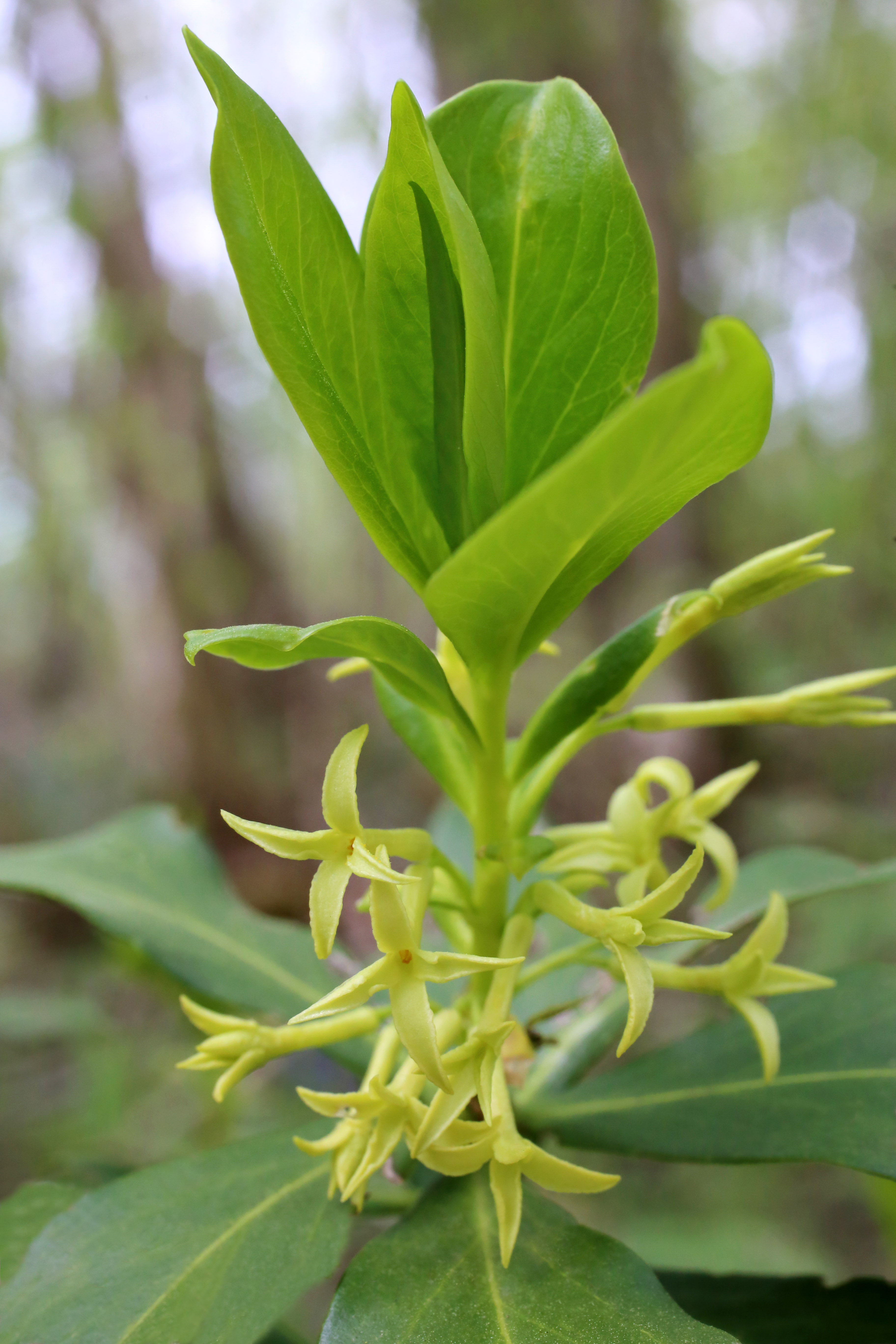Twin-flowered
(Daphne pontica)

Description
Daphne pontica, commonly known as twin-flowered or Pontic daphne, is a species of flowering plant in the family Thymelaeaceae, native to Bulgaria, northern Turkey and the Caucasus. It is a small evergreen shrub growing to 1 m (3 ft 3 in) tall by 1.5 m (4 ft 11 in) wide, with leathery leaves and clusters of fragrant yellow flowers in pairs, in spring. The flowers are often followed by black berries. It tolerates deep shade in the garden, but dislikes transplanting. This plant has gained the Royal Horticultural Society's Award of Garden Merit. The specific epithet pontica, refers to the Latin term for Pontus, a city of the Black Sea. Daphne is a genus of between 70 and 95 species of deciduous and evergreen shrubs in the family Thymelaeaceae, native to Asia, Europe and north Africa. They are noted for their scented flowers and often brightly coloured berries. Two species are used to make paper. Many species are grown in gardens as ornamental plants; the smaller species are often used in rock gardens. All parts of daphnes are poisonous, especially the berries. Daphne species are shrubs, with upright or prostrate stems. Upright species may grow to 1.5 m (5 ft). Their leaves are undivided, mostly arranged alternately (although opposite in D. genkwa), and have short petioles (stalks). The leaves tend to be clustered towards the end of the stems and are of different shapes, although always longer than wide. The leaf surface may be smooth (glabrous) or hairy. Many species flower in late winter or very early spring. The flowers are grouped into clusters (inflorescences), either in the leaf axils towards the end of the stems or forming terminal heads. The inflorescences lack bracts. Individual flowers completely lack petals and are formed by four (rarely five) petaloid sepals, tubular at the base with free lobes at the apex. They range in colour from white, greenish yellow or yellow to bright pink and purple. Most of the evergreen species have greenish flowers, while the deciduous species tend to have pink flowers. There are twice the number of stamens as sepals, usually eight, arranged in two series. Stamens either have short filaments or lack filaments altogether and are usually held inside the sepal tube. The style is short or absent, and the stigma is head-shaped (capitate).
Taxonomic tree:







